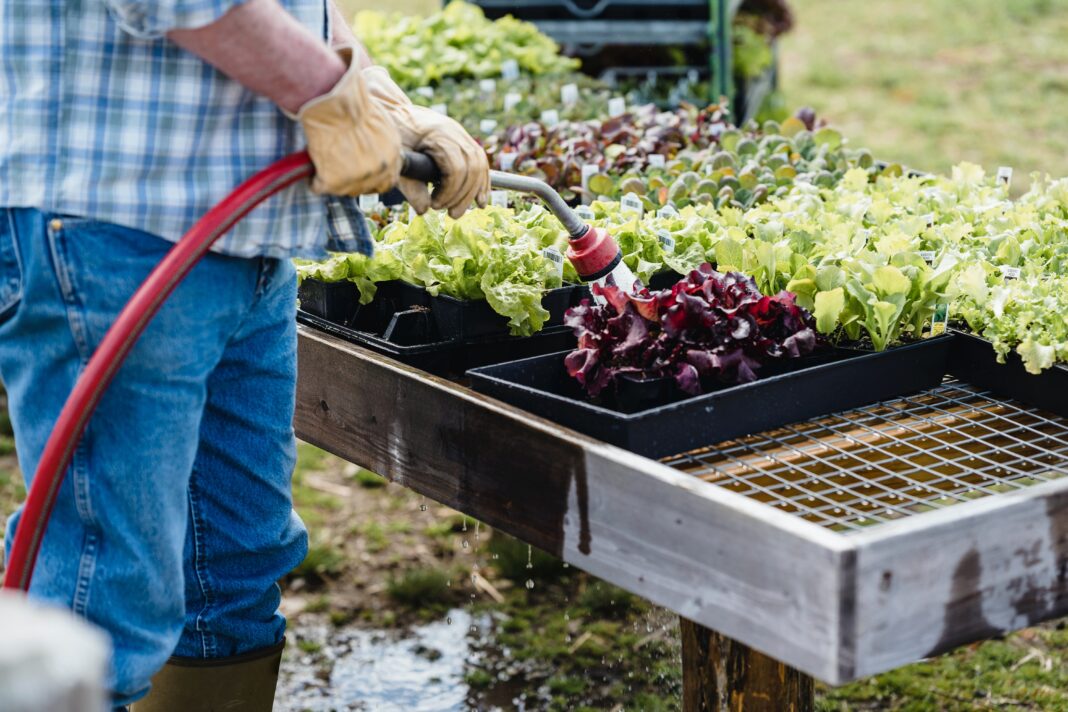It’s fall in Eastern Carolina and there is nothing better than embracing the cooler temperatures for a delightful gardening journey that yields flavorful homegrown vegetables all through the autumn season. This guide will give you insights into planting, sowing, and nurturing your crops to make the most of your gardening endeavors here in the South.
What to know about planing a garden in the fall
As a general guideline, autumn crops thrive when daytime temperatures range from 70 to 75 degrees Fahrenheit, with nighttime temperatures in the 50s. However, before you embark on your planting journey, it’s essential to acquaint yourself with three crucial pieces of information: your USDA hardiness zone, the anticipated date of the first frost in your locale, and the maturation period of your chosen crops.
Determining your hardiness zone, which can be found easily online, provides insight into the average annual minimum temperature in your region, helping you ascertain if your desired crops can thrive there. The other two pieces of information are equally vital for establishing your gardening timeline. To pinpoint the date of the first frost, you can utilize zip code search tools on resources like the Almanac or Garden.org. Alternatively, seek guidance from the New Hanover County Arboretum or a trusted nearby nursery.
The “days to maturity” for specific plants is typically indicated on seed packaging or in online descriptions. This critical detail enables you to plan the perfect planting time. For instance, if your chosen crop requires 60 days to mature, and the first frost is expected around November 15th, you should aim to start planting by the second week of September. If you find yourself late in the season, don’t despair; you may still have the option to acquire healthy starter plants from a local nursery as a convenient alternative.
The top tips for planting a fall garden
Keep in mind that this general rule of thumb provides your plants with a strong advantage. After they reach maturity, numerous autumn crops can endure frost and might even thrive in it, enhancing their flavor profile.
Choose fast growing crops
With your knowledge of our regional fall climate conditions in hand, it’s time to choose your seeds wisely. It’s worth noting that certain cold-resistant vegetables, like carrots and onions, may not sprout or develop rapidly, making them less suitable for those seeking quick results from a fall garden. On the other hand, there are some cool-weather crops known for their fast growth, typically reaching maturity in 45 to 60 days. These include:
- Leafy greens like spinach, Swiss chard, kale, arugula, and various lettuces. These greens usually thrive when provided with full sun, consistent watering, and well-draining soil.
- Root vegetables, including beets, radishes, and turnips. These low-maintenance choices can flourish in either full sun or partial shade, but be sure to water them attentively for best results.
- Broccoli, kohlrabi, cauliflower, and Brussels sprouts are also great choices. While they prefer full sun, they can tolerate partial shade. To help them grow, make sure they receive sufficient water and are planted in well-draining soil.
Tips to make sure your crops growth healthy
These tips will ensure you have great tasting veggies and your plants grow in healthy.
Prepare the soil for planting
Begin by clearing the garden of weeds and any remnants from your spring-planted crops. Afterward, till the soil to aerate and loosen it. Ensure you have fertilizer, mulch, compost, and any necessary amendments ready to provide your seeds with a strong foundation for growth.
Sow your seeds
Numerous fall vegetable seeds are suitable for direct planting in garden soil, but it’s crucial to heed the guidelines provided on the seed packet. The spacing and depth at which you plant them can significantly impact their growth and development.
Provide ample water
During the initial weeks, you might need to apply extra water generously to ensure that the topmost inch of soil remains sufficiently moist while the seeds are in the germination phase.
Watch the weather closely
In case of a drought or a series of heavy rainstorms in your region, you may need to adjust your watering regimen accordingly, either increasing or reducing the watering requirements as necessary.
Know when each crop will be ripe
Learn to recognize the visual and tactile cues that indicate when your fall crops are ready for harvest.
Pick when ripe
Keep in mind that frost can actually benefit your fall garden, so don’t let the early cold days rush you into harvesting prematurely. If you do, you might miss out on the best flavors. For instance, spinach and beets can generally withstand a light freeze (28 to 32 degrees Fahrenheit), while robust Brassica crops can endure several freezes with temperatures ranging from 24 to 28 degrees Fahrenheit without any harm.



